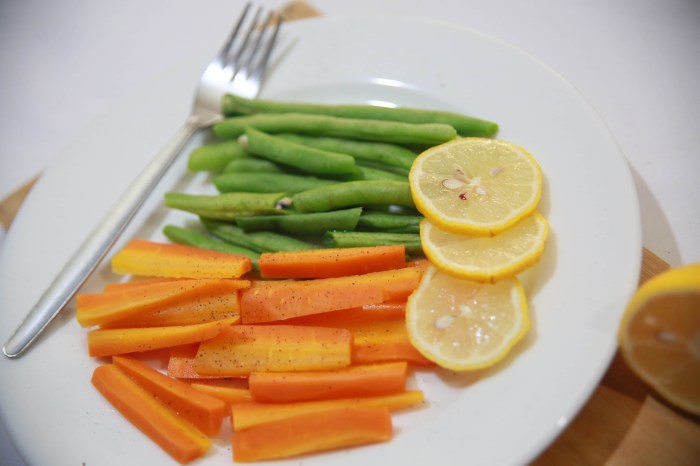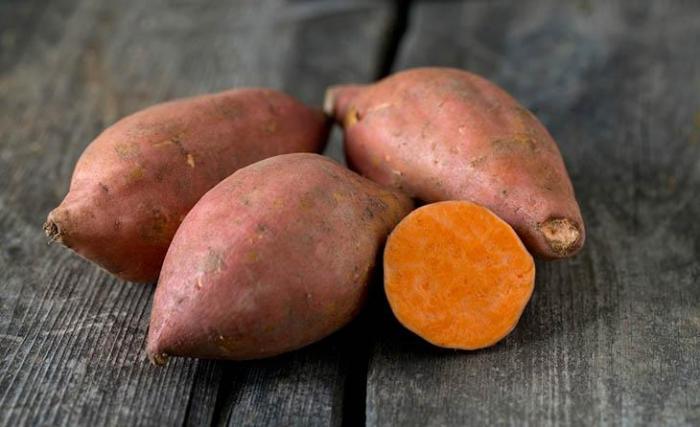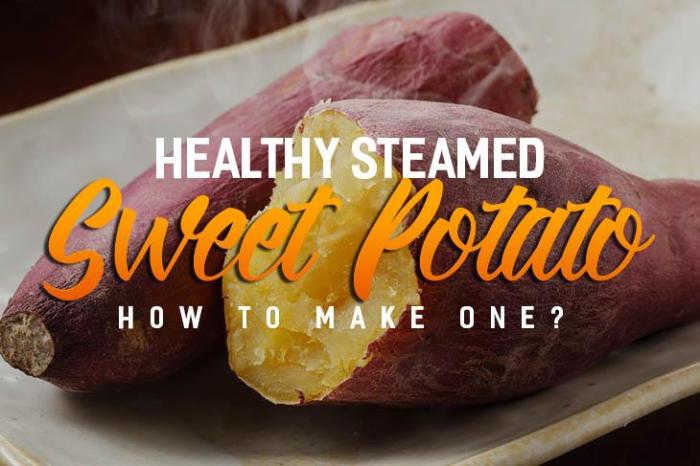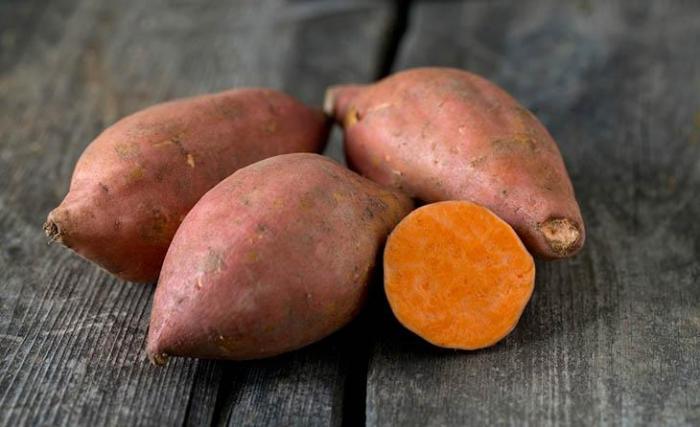Steam Food in the Microwave: Unlocking the potential of your microwave for healthy and delicious meals. This guide explores various microwave steaming methods, from quick vegetable bursts to perfectly cooked dumplings. Discover the benefits of this convenient cooking technique, and learn how to achieve optimal results every time.
We’ll cover everything from choosing the right cookware to troubleshooting common issues, providing a comprehensive resource for mastering microwave steaming. From safety considerations to delicious recipes, this guide is your complete one-stop shop for all things microwave steaming.
Microwave Cooking Methods for Steam Food
Microwaving steam food offers a convenient and quick alternative to traditional stovetop steaming. This method allows for precise control over cooking times and power levels, enabling cooks to achieve a wide range of textures and moisture levels. Understanding the nuances of microwave steaming can significantly enhance the culinary experience.Microwave cooking relies on the rapid heating of water molecules within the food.
This rapid heating, coupled with the steam generated, effectively cooks the food. The key is to understand how different power settings and techniques affect the final outcome.
Microwave Steam Cooking Variations
Different methods of steaming in a microwave result in varying cooking outcomes. Adjusting the power level and cooking time directly impacts the texture and moisture content of the food. Experimentation is key to finding the optimal method for your preferred results.
- High Power, Short Time: This method uses the highest power setting for a relatively short cooking time. It’s ideal for foods that require a quick cook, like small vegetables or fish. This often yields a crispier texture compared to other methods, but careful monitoring is essential to avoid overcooking. For example, a piece of broccoli floret may be cooked to a crisp-tender texture at 100% power for 1 minute, while a fish fillet may require a shorter time to avoid dryness.
- Medium Power, Longer Time: Using medium power for a longer time is beneficial for larger pieces of food or foods that require a more tender texture. This method allows for more even heating and helps prevent overcooking. For instance, larger chunks of carrots may require 5 minutes at 50% power to ensure they are cooked through without becoming mushy.
- Variable Power Levels: Employing varying power levels during the cooking process can yield optimal results. A higher power level can be used for initial heating, followed by a lower power level to finish the cooking. This helps maintain moisture and achieve a desired texture. This technique might be best for dumplings, ensuring they cook through without losing their shape.
Comparative Cooking Times
The cooking time for different foods varies significantly depending on the method. The following table provides an estimated comparison of cooking times for common steam foods using different microwave methods.
| Food Type | High Power (100%) | Medium Power (50%) | Variable Power |
|---|---|---|---|
| Broccoli florets (1 cup) | 1-2 minutes | 3-4 minutes | 1 minute high, 2 minutes medium |
| Salmon fillet (4 oz) | 2-3 minutes | 4-5 minutes | 1 minute high, 2 minutes medium |
| Vegetable dumplings (6) | 2-3 minutes | 4-5 minutes | 1 minute high, 3 minutes medium |
Common Mistakes to Avoid
Avoiding certain mistakes can significantly improve the quality of your microwave-steamed food. Improper techniques can lead to uneven cooking, overcooking, or moisture loss.
- Overcrowding the microwave: Avoid placing too many food items in the microwave. This prevents even heating and leads to uneven results. Ensure proper spacing between food items to allow for efficient steam circulation.
- Insufficient water: Steaming requires moisture. Insufficient water can result in dry or undercooked food. Ensure adequate liquid is added to the food or a microwave-safe container.
- Ignoring power level settings: Choosing the right power level is crucial for achieving the desired outcome. Incorrect power levels can lead to overcooked or undercooked food. Always follow the specific guidelines for each food type.
Microwave Steam Cooking Guide
This table offers a more comprehensive approach to microwave steaming, covering a wider range of foods.
| Food Type | Cooking Time (minutes) | Power Level (%) | Desired Outcome |
|---|---|---|---|
| Asparagus | 2-3 | 60 | Tender-crisp |
| Shrimp | 1-2 | 100 | Tender |
| Chicken breast (small) | 3-4 | 50 | Moist |
Safety Considerations and Precautions
Steaming food in a microwave oven is a convenient method, but like any cooking technique, it comes with potential hazards if not handled carefully. Understanding the potential risks and implementing safety precautions is crucial for a pleasant and safe cooking experience. This section focuses on ensuring your safety while enjoying the benefits of microwave steaming.Microwaves heat food by exciting water molecules, which in turn generate heat.
This rapid heating can cause uneven cooking and potentially dangerous temperature variations within the food. Proper precautions and techniques are essential to prevent burns and other safety issues, and to ensure the food is thoroughly cooked and safe to eat.
Potential Hazards
Microwave steaming, while generally safe, presents specific risks if not handled with care. Overheating of food or steam burns are potential hazards, especially if the food is not properly monitored. Using unsuitable cookware or containers can also lead to issues, such as uneven heating or breakage. Improper monitoring during the cooking process can result in food that is undercooked or overcooked, affecting both safety and taste.
Safety Precautions for Preventing Burns
Always use oven mitts or pot holders when handling hot containers and steam. Steam from microwaved food can be surprisingly hot and cause burns, especially immediately after the cooking cycle is complete. Allow the food to cool slightly before removing it from the container. When opening the microwave door, be mindful of the steam that might escape.
This is particularly important when the food is steaming.
Choosing Appropriate Cookware and Containers
Microwave-safe cookware and containers are critical for safety. Ensure that the chosen materials are specifically designed for microwave use. Avoid using metal cookware, as it can cause sparks or create uneven heating. Glass, ceramic, or microwave-safe plastic are ideal choices. Pay close attention to the container’s capacity, making sure it is not too small to allow for proper steaming.
Overcrowding can lead to uneven cooking.
Monitoring Food During Cooking
Regular monitoring is vital to prevent overcooking. Check the food at intervals during the cooking process. Use a food thermometer to ensure the food reaches a safe internal temperature. This is especially important for meats and other foods that need to reach a specific temperature for safety. The cooking time will vary depending on the type of food and the amount.
If the food appears to be overcooked or has an unusual texture, immediately remove it from the microwave.
Specific Safety Guidelines
- Always use oven mitts or pot holders when handling hot containers or when opening the microwave door.
- Never use metal cookware or utensils in the microwave.
- Ensure that the cookware or container is microwave-safe.
- Keep a close eye on the food during the cooking process and avoid leaving it unattended for extended periods.
- Use a food thermometer to verify the internal temperature of the food, especially for meats and other temperature-sensitive items.
- If the food shows signs of being overcooked or has an unusual texture, remove it immediately and do not consume it.
- If you are unsure about the safety of the food, err on the side of caution and discard it.
Food Selection and Preparation
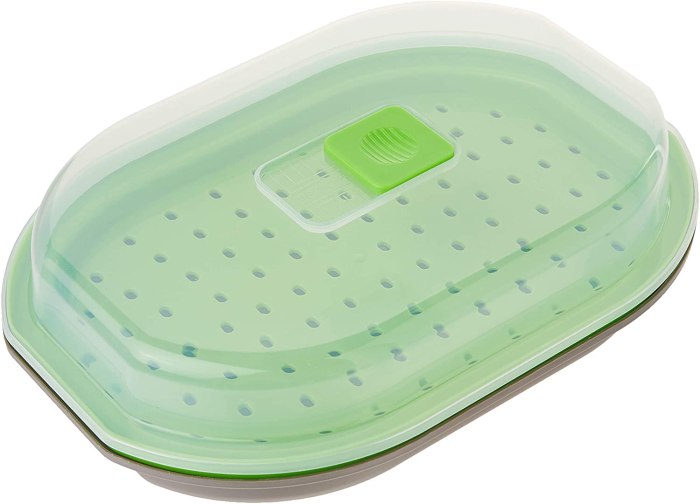
Microwaving steam-cooked food offers a convenient and healthy way to prepare meals. However, selecting the right foods and preparing them correctly is key to achieving optimal results and preventing issues. This section will guide you through the best food choices, preparation techniques, and steaming methods for various dishes.Proper food preparation before steaming significantly impacts the final outcome. Chopping, portioning, and other pre-steaming steps ensure even cooking and maintain the desired texture and flavor.
This section details the optimal approaches for different food types, ensuring that every bite is a delight.
Suitable Food Types for Microwave Steaming
A wide variety of foods excel when steamed in the microwave. Vegetables, seafood, and lean meats are particularly well-suited. The gentle heat and controlled moisture of steaming preserve the nutrients and natural flavors of these ingredients. Furthermore, steaming allows for rapid cooking, which can be particularly beneficial for delicate ingredients like seafood.
Importance of Proper Food Preparation, Steam Food in the Microwave
Pre-steaming preparation is crucial for even cooking and optimal results. Chopping vegetables into uniform sizes ensures even steaming and prevents some pieces from becoming overcooked while others remain undercooked. Similarly, portioning food into manageable sizes allows for more efficient and precise cooking. This careful preparation prevents uneven cooking and ensures a delightful eating experience.
Steaming Methods for Different Food Types
Steaming methods vary based on the type of food being prepared. Vegetables, for instance, often benefit from a longer steaming time to ensure they are tender and cooked through. Seafood, on the other hand, needs a shorter steaming time to prevent overcooking and maintain its delicate texture. Meats, especially lean cuts, can be steamed for a quicker and more healthful alternative to other cooking methods.
Each food type has unique requirements for steaming.
Preparing Different Steam Foods for Optimal Microwave Results
The preparation method for each food type significantly affects the final product. For vegetables, washing and chopping into even pieces are essential for even cooking. Seafood should be patted dry before steaming to prevent excess moisture and ensure a satisfying texture. Lean meats can be marinated prior to steaming to enhance flavor and tenderness. Specific instructions for different food types are Artikeld below:
- Vegetables: Wash thoroughly, chop into uniform pieces, and arrange in a microwave-safe dish. Add a little water to the dish to create steam.
- Seafood: Pat dry, place on a microwave-safe dish, and cover. Add a small amount of water for steaming.
- Lean Meats: Season and marinate, if desired, then place on a microwave-safe dish. Add a little water to the dish for steaming.
Foods to Avoid Steaming in a Microwave
Certain foods are not ideal for steaming in a microwave due to potential issues with texture, safety, or uneven cooking. These include foods with high fat content, which can splatter and create unpleasant flavors. Also, foods with a dense structure or very thick cuts may not cook evenly. Furthermore, some foods may not retain their original shape or form during the steaming process.
- Foods with High Fat Content: Fatty meats, certain cheeses, and rich sauces are not recommended due to the potential for splattering and uneven cooking.
- Foods with Dense Structure: Root vegetables with tough skins, like potatoes or sweet potatoes, may not cook evenly or maintain their shape.
- Foods with Thick Cuts: Large cuts of meat or poultry may not cook through evenly due to the uneven distribution of heat.
Nutritional Value and Health Benefits
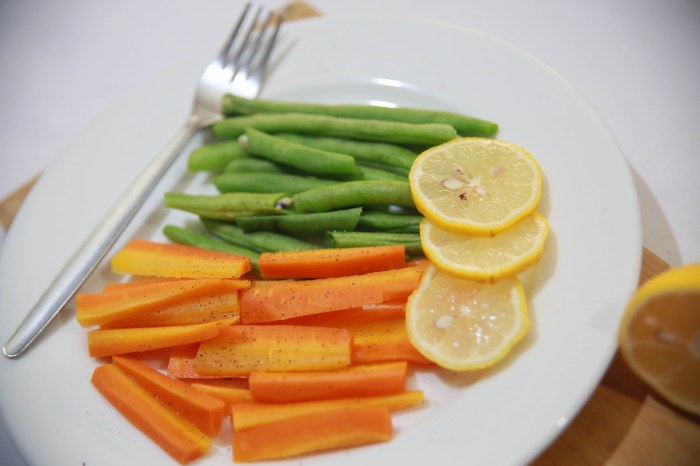
Steaming food in a microwave offers a unique approach to cooking, potentially preserving more nutrients than other methods. This method, when done correctly, can be a valuable part of a healthy diet, ensuring you get the most out of your food. By understanding the principles behind microwave steaming and its impact on nutritional value, you can make informed choices for better health.Microwave steaming, unlike frying or boiling, often leads to better nutrient retention.
This is because the high heat and rapid cooking times associated with other methods can sometimes leach out vitamins and minerals. Steaming, particularly in a microwave, helps maintain the integrity of these essential nutrients.
Nutrient Retention in Steamed Food
Microwave steaming helps preserve vitamins and minerals because of the controlled environment. The shorter cooking time limits the exposure of food to high temperatures, which is crucial for retaining heat-sensitive nutrients. This gentler approach can lead to a greater retention of essential vitamins and minerals compared to boiling or frying.
Comparison to Other Cooking Methods
Steaming in a microwave often outperforms other cooking methods in terms of nutrient retention. Frying, for example, can introduce excess fats and oils into the food, which can have negative health consequences. Boiling, while simpler, can cause water-soluble vitamins and minerals to leach into the cooking water, potentially lowering the overall nutritional value of the food.
Potential Health Risks of Improper Microwave Steaming
While microwave steaming is generally a safe and healthy method, improper practices can lead to problems. Overcooking can result in nutrient loss and potentially altering the texture of the food. Moreover, using excessive amounts of water or improper container selection might lead to food not being adequately steamed, potentially resulting in an unevenly cooked meal.
Nutritional Value of Different Steamed Foods
The nutritional value of steamed foods varies significantly depending on the food itself. Different foods contain varying amounts of vitamins, minerals, and antioxidants. A well-balanced diet should include a variety of steamed foods to ensure a wide range of nutrients.
Quick steaming in the microwave is a lifesaver for busy weeknights. It’s surprisingly effective for veggies and even some proteins. Speaking of quick and efficient, recent tributes to artists like Rihanna, Drake, Chance the Rapper, and a reminder of Nipsey Hussle’s legacy are touching rihanna drake chance the rapper more remember nipsey hussle , highlighting the importance of remembering those who inspire us.
So, back to steaming, it’s a healthy and convenient way to enjoy fresh, delicious meals without spending hours in the kitchen.
| Food | Vitamins | Minerals | Antioxidants |
|---|---|---|---|
| Broccoli | Vitamin C, Vitamin K | Potassium, Manganese | Sulforaphane |
| Asparagus | Vitamin K, Folate | Potassium, Manganese | Flavonoids |
| Green Beans | Vitamin C, Vitamin K | Potassium, Manganese | Beta-carotene |
| Chicken Breast | Vitamin B6, Niacin | Iron, Zinc | Antioxidants present in trace amounts. |
| Sweet Potatoes | Vitamin A, Vitamin C | Potassium, Manganese | Beta-carotene |
Recipes and Examples
Microwave steaming is a quick and convenient way to enjoy delicious and healthy meals. This method retains nutrients and allows for versatile culinary creations. The key is understanding the unique properties of microwave cooking and adjusting recipes accordingly. This section provides a range of easy-to-follow recipes to get you started.
Easy Microwave Steaming Recipes
Microwave steaming offers a wide range of culinary possibilities. From simple vegetables to elaborate dishes, these recipes highlight the efficiency and versatility of this cooking method.
- Simple Vegetable Medley: This recipe is perfect for a quick and nutritious side dish. It showcases the ease of steaming a variety of vegetables simultaneously.
- Ingredients: 1 cup broccoli florets, 1 cup sliced carrots, 1 cup sliced bell peppers (any color), 1 tbsp olive oil, salt and pepper to taste.
- Instructions: Combine all ingredients in a microwave-safe bowl. Drizzle with olive oil and season with salt and pepper. Cover with a microwave-safe lid or plastic wrap. Cook on high for 3-5 minutes, or until vegetables are tender-crisp. Stir halfway through.
- Steamed Shrimp with Ginger and Garlic: This recipe demonstrates how to elevate simple ingredients with aromatic additions.
- Ingredients: 1 lb shrimp, peeled and deveined, 1 tbsp minced ginger, 2 cloves garlic, minced, 1 tbsp soy sauce, 1 tbsp sesame oil, salt and pepper to taste.
- Instructions: Combine shrimp, ginger, garlic, soy sauce, and sesame oil in a microwave-safe bowl. Season with salt and pepper. Cover with a microwave-safe lid or plastic wrap. Cook on high for 2-3 minutes, or until shrimp is pink and opaque. Stir halfway through.
- Steamed Fish with Lemon and Herbs: This showcases how aromatic herbs and spices enhance the flavor of steamed fish.
- Ingredients: 1 lb fish fillets (cod, tilapia, or haddock), 1 lemon, sliced, 1 tbsp chopped fresh parsley, 1 tbsp chopped fresh dill, salt and pepper to taste.
- Instructions: Place fish fillets in a microwave-safe dish. Top with lemon slices, parsley, dill, salt, and pepper. Cover with a microwave-safe lid or plastic wrap. Cook on high for 3-4 minutes, or until fish is cooked through. Stir halfway through.
Dumpling Steaming Recipe
This recipe provides a step-by-step guide to steaming dumplings in a microwave, highlighting the efficiency of this method.
- Preparation: Ensure dumplings are properly prepared according to package instructions. Prepare the microwave-safe dish with a steamer basket or a plate with a lid.
- Assembly: Place the dumplings in the steamer basket or on the plate.
- Steaming: Cover the dish tightly with a lid or plastic wrap. Microwave on high for 2-3 minutes, or until the dumplings are cooked through and the filling is heated thoroughly. Stir occasionally to ensure even cooking.
Microwave Steaming Recipe Table
This table summarizes various steaming recipes, including ingredients, cooking time, and serving suggestions.
| Recipe | Ingredients | Cooking Time (approx.) | Serving Suggestions |
|---|---|---|---|
| Simple Vegetable Medley | Broccoli, carrots, bell peppers, olive oil, salt, pepper | 3-5 minutes | Side dish, main course accompaniment |
| Steamed Shrimp | Shrimp, ginger, garlic, soy sauce, sesame oil, salt, pepper | 2-3 minutes | Appetizer, main course |
| Steamed Fish | Fish fillets, lemon, herbs, salt, pepper | 3-4 minutes | Light meal, main course |
| Steamed Dumplings | Prepared dumplings | 2-3 minutes | Main course, side dish |
Troubleshooting and Common Issues
Steaming food in the microwave can be a quick and convenient way to prepare healthy meals, but like any cooking method, it comes with its own set of potential pitfalls. Understanding common problems and their solutions can significantly enhance your microwave steaming experience and prevent frustrating outcomes. This section will delve into troubleshooting techniques for ensuring perfectly steamed food every time.Microwaves use electromagnetic radiation to heat food, and this process can be influenced by several factors.
Inaccurate timing, uneven distribution of moisture, and variations in food density can lead to issues like overcooking or undercooking. By understanding the underlying causes and implementing appropriate troubleshooting steps, you can confidently navigate any steaming challenges.
Common Microwave Steaming Problems
Understanding the common problems in microwave steaming is crucial to achieving perfect results. This section will cover issues ranging from undercooked food to overcooked meals, and provide solutions for each.
- Food Not Steaming Properly: Food may not steam evenly if not placed correctly or if the microwave’s power is inconsistent. Proper distribution of food, ensuring even moisture around the food, and using a microwave-safe container with adequate space for steam are essential. Experiment with different placements within the microwave to find the optimal spot for even heating.
- Overcooked Food: Overcooked food in a microwave can result from exceeding the recommended cooking time or using a high power setting. Always adhere to the recipe’s instructions, adjusting time according to the food’s thickness and the microwave’s power level. Check food at intervals to avoid overcooking. Reducing the cooking time or power level, and using appropriate food-specific cooking times, will help avoid this problem.
Steam cooking in the microwave is surprisingly efficient for prepping healthy meals. Thinking about how crucial proper hydration is for reptiles, like green anole lizards, Care for Green Anole Lizards really highlights the importance of consistent moisture in food preparation. This translates directly back to the benefits of steaming in the microwave, preserving nutrients and making it a convenient way to prepare healthy and nutritious meals.
- Undercooked Food: Undercooked food in a microwave can result from insufficient cooking time. This often happens with thicker or denser foods. Use the recipe as a guideline but be prepared to extend cooking time. Use a meat thermometer to check the internal temperature of meat for safety and optimal doneness. Always monitor the food throughout the cooking process, and adjust the time as needed.
- Uneven Cooking: Uneven cooking can stem from the uneven distribution of heat or the use of an inappropriate container. Using a microwave-safe dish with adequate space, arranging food evenly, and rotating the dish during cooking will help distribute heat more effectively. Also, consider the type of food, as some may need specific arrangement to ensure even cooking.
- Leaking or Spilling: Leaking or spilling during steaming is a common problem when food is not arranged properly or the container is not microwave-safe. Ensure that the container is suitable for microwaving and that the food is placed in a manner that prevents spilling or leakage. If you are steaming something that has a high moisture content, be mindful of this to prevent leakage.
Troubleshooting Tips
Troubleshooting common steaming problems involves understanding the root cause and implementing effective solutions. These practical tips will help you overcome any steaming challenges.
- Use the Right Container: Choose microwave-safe containers that are suitable for steaming. This ensures even heating and prevents leakage. Glass or ceramic containers are generally good choices. Avoid using containers that are not designed for microwaving.
- Check Cooking Times: Always refer to the recipe’s recommended cooking times and adjust them based on the microwave’s power level and the food’s thickness. Monitor the food during the cooking process and use a thermometer if needed. Always adjust cooking times according to the food type.
- Proper Food Placement: Arrange food evenly within the container to ensure uniform heating. Avoid overcrowding the container. Ensure even spacing to allow for proper steam circulation.
- Monitor Food Temperature: Use a food thermometer to ensure the food reaches the appropriate internal temperature for safety and optimal taste. Check the temperature at intervals to avoid overcooking.
- Experiment with Power Levels: If you’re experiencing issues, try adjusting the microwave’s power level. Start with a lower power level and gradually increase it as needed. Always be aware of the food type and adjust power levels accordingly.
Microwave Steaming Equipment and Tools
Microwave steaming offers a convenient way to cook food quickly and efficiently, preserving nutrients. Proper equipment is crucial for successful results, from evenly distributing heat to preventing splattering and ensuring food safety. Choosing the right tools and cookware can significantly impact the outcome of your microwave-steamed dishes.Selecting appropriate equipment for microwave steaming is essential for optimal results. This involves careful consideration of cookware materials, steaming accessories, and the crucial role of microwave-safe containers and wraps.
Quick and easy steam food in the microwave is a game-changer for weeknight meals. It’s surprisingly healthy too, retaining nutrients better than other cooking methods. Speaking of healthy, I was totally blown away by the recent news about The Weeknd’s custom vaporizer playing the hills the weeknds custom vaporizer plays the hills. Definitely a cool celebrity story, but back to steaming veggies – perfect for a light, nutritious dinner.
Understanding these aspects ensures efficient heat distribution, prevents accidents, and preserves the nutritional value of the food.
Essential Tools and Equipment
Microwave steaming often requires specialized tools beyond basic cookware. A steamer basket, designed for separating food from the water, is fundamental. A microwave-safe bowl for collecting condensation is also essential. These components are crucial for preventing food from becoming soggy and for ensuring even steaming. Other useful tools include measuring cups and spoons, for accurate portion control, and a spatula for gently transferring food.
- Steamer Basket: A mesh basket, typically made of stainless steel or plastic, sits atop the base of the microwave-safe bowl. This basket elevates the food above the water, allowing for proper steaming. It also prevents the food from being submerged in water, thus preserving its texture and taste. Choose a basket with a wide base for even steaming and ample space for the food.
The basket’s size should be appropriate to the amount of food being steamed.
- Microwave-Safe Bowl: A bowl that can withstand microwave temperatures is essential to catch the water and steam. This bowl should be large enough to accommodate the food and steamer basket. Glass or ceramic bowls are ideal, while metal bowls are often unsuitable for use in a microwave.
- Measuring Cups and Spoons: Accurate measurement of ingredients is key in cooking. Use microwave-safe measuring cups and spoons to accurately measure the ingredients for recipes. This precision is vital for achieving consistent results.
- Spatula: A spatula is helpful for gently transferring food to and from the steamer basket or bowl.
Microwave-Safe Cookware
Selecting appropriate cookware is vital for safe and effective microwave steaming. Microwave-safe cookware is designed to withstand the high temperatures and electromagnetic fields generated by the microwave oven. Different materials have different characteristics that affect the steaming process.
- Glass: Glass cookware is widely used for microwave steaming due to its even heat distribution and transparency, allowing you to monitor the steaming process. Glass is a safe material for microwaving, and many types of glass are resistant to cracking or chipping under microwave conditions.
- Ceramic: Ceramic cookware offers similar advantages to glass, providing even heat distribution and visibility. It’s a sturdy material and can often withstand high temperatures, making it suitable for various steaming applications.
- Stainless Steel: Stainless steel is a durable material, but its ability to distribute heat evenly can vary. Some stainless steel cookware might not be as efficient in the microwave as glass or ceramic, but it is robust for repeated use.
Steaming Accessories
Various steaming accessories can enhance the microwave steaming experience. Choosing the right accessory depends on the specific needs and desired results.
- Steaming Lids: Steaming lids can help contain steam, ensuring even cooking and preventing splattering. They are beneficial for delicate foods that might dry out quickly.
- Steamer Mats: Steamer mats can be placed on the bottom of the bowl to prevent food from sticking and to aid in even steaming. They are often made of silicone or other heat-resistant materials.
Microwave-Safe Containers and Wraps
Using microwave-safe containers and wraps is crucial for preventing spills and ensuring safe food handling. Proper wrapping can retain moisture and improve the steaming process.
- Microwave-Safe Plastic Wrap: Use microwave-safe plastic wrap to cover the food during steaming, retaining moisture and preventing splattering.
- Microwave-Safe Containers: Choosing appropriate containers that are microwave-safe is important to prevent any damage to the container or the food inside. Glass or ceramic containers are suitable for microwave use.
Comparison of Steaming Accessories
| Accessory | Features | Benefits | Price Range |
|---|---|---|---|
| Steamer Basket | Mesh construction, various sizes | Elevates food, prevents sogginess | $5-$25 |
| Steaming Lids | Tight-fitting lids | Maintains moisture, reduces splattering | $3-$15 |
| Steamer Mats | Heat-resistant material | Prevents sticking, improves even steaming | $5-$20 |
Visual Representation
Capturing the essence of microwave steaming, especially its unique visual aspects, is crucial for showcasing the process and its results effectively. High-quality images are vital in conveying the elegance and efficiency of this cooking method. The visual journey through the different stages of the process will help readers understand and appreciate the technique.
Stages of Microwave Steaming
Visual representation of microwave steaming should clearly depict the different stages of the cooking process. Each stage, from initial preparation to the final presentation, holds unique visual cues that convey the essence of the method. The key is to highlight the changes in the food, the steam, and the overall environment.
- Initial Preparation: A picture of the prepared food ingredients, neatly arranged in a microwave-safe container, showcasing the freshness and vibrancy of the ingredients. A close-up of the container with the food, showing the proper layering and spacing for even steaming. The image should clearly display the microwave-safe cookware.
- Steaming in Progress: A dynamic image of the steaming food in the microwave. The steam rising from the food should be clearly visible, suggesting the heat transfer and cooking process. Focus on the moisture rising, reflecting the cooking method. The container should be clearly visible, showing the food within. The image should evoke a sense of the process happening in real-time.
- Completion of Steaming: An image of the finished steamed food, showing the tender texture and vibrant colors. The image should focus on the food, highlighting its appealing appearance. The presentation should be attractive, with the steam no longer visible. The image should suggest the food’s readiness to be served.
Presenting the Steaming Process Visually
High-quality images are paramount for showcasing microwave steaming. Images should be sharp, well-lit, and clearly focused on the food and the steaming process.
- Lighting and Composition: Use natural light whenever possible to capture the food’s natural colors and textures. Avoid harsh shadows or overly bright lights that might obscure details. The composition should be visually appealing, with clear focus on the steaming food and the relevant equipment.
- Equipment and Tools: Showcase the specific microwave-safe containers and tools used in the steaming process. Pictures should show the equipment’s functionality in the steaming process. Close-up shots of the containers and tools, clearly demonstrating their practicality and ease of use.
- Food Selection: Illustrate the diversity of food that can be steamed in a microwave. Show different types of vegetables, fruits, grains, and proteins. Include diverse and representative examples, ensuring all food groups are well-represented.
Visual Guide for Microwave Steaming Techniques
A visual guide should present a series of images illustrating various microwave steaming techniques for different types of food.
| Food Type | Preparation | Microwave Time (approx.) | Visual Cue |
|---|---|---|---|
| Vegetables (broccoli, carrots) | Cut into bite-sized pieces, placed in a microwave-safe container with a little water. | 2-3 minutes | Steamed vegetables with vibrant color, tender texture, and visible steam. |
| Fish fillets | Seasoned and placed in a microwave-safe container with a small amount of water or broth. | 2-4 minutes | Tender, flaky fish fillet, with clear moisture retained, and a slight steam emanating from the container. |
| Chicken breast | Cut into bite-sized pieces, placed in a microwave-safe container with a little water or broth. | 4-6 minutes | Tender chicken breast, with a clear moist appearance and a minimal amount of steam. |
Visual Appeal of Steamed Food
To enhance the visual appeal of steamed food after cooking, consider the presentation.
- Garnish: A simple garnish, such as fresh herbs or a sprinkle of sesame seeds, can elevate the visual appeal of steamed food. Showcase the garnish’s effect on the food’s presentation.
- Presentation: Arrange the steamed food attractively on a plate or platter. Use contrasting colors and textures to make the dish visually appealing. The presentation of steamed food should highlight the final product’s appealing texture and color.
Last Point: Steam Food In The Microwave
In conclusion, steaming food in the microwave offers a quick, convenient, and healthy way to prepare meals. By understanding the different methods, safety precautions, and food preparation techniques, you can elevate your microwave cooking experience. This comprehensive guide empowers you to confidently tackle various dishes, ensuring delicious and nutritious meals for yourself and your family. So, ditch the stovetop and embrace the efficiency of microwave steaming!
